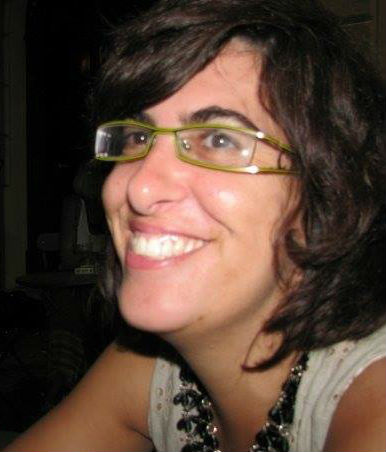




Berlin is a city in motion. Its main landmarks – the signs on the ground of the former Wall, the Brandenburger Gate, the checkpoints of the Cold War – are all symbols of free movement and the cruel reminder of the its divided past. In a way, Berlin is still a city on the border. All attempts of the current German chancellor Angela Merkel to welcome war refugees are a testament of this. Those immigrants arriving in Bavaria are promptly allocated new homes in states across Germany, and in just one day in 2015, 350 were dispatched to the German capital.
Now just move eight degrees of longitude eastwards away from Berlin, and you are in Iraq. The country is home to the ancient city of Uruk, the birth of Mesopotamian civilization and also the largest cities one in the world at the time (nearly 3,000 years ago). At its peak around 4,100-3,000 bC, the wall had 11,5 km and its nearly 50,000 inhabitants occupied an area of 5.5km2. Just like Berlin, this city became famous at the time for its extensive and prominent wall.
People in cities or countries that have experienced recent conflicts have a similar sensibility towards human rights. This is evident in the Berlin Film Festival: the event this year awarded the Golden Bear to a film about boats overloaded with despairing immigrants (Fire at Sea, Gianfranco Rosi). It also gave important prizes to other movies with similar topics: a son that runs away from a proscribed future in the Islamic North Africa (Hedi, Mohammed Ben Attia), and the fight of Filipino people for independence (A Lullaby to Sorrowful Mystery, Lav Diaz). This political consciousness distinguishes European film festivals from American ones, and this is probably because Europeans have experienced war on their own turf.
Telling a different story
Cinema has explored the story of war refugees and warring countries ad nauseam. Examples go from Roberto Rossellini’s Rome, Open City (1945) to Terry George’s Hotel Rwanda (2004). Theo Angelopoulos won the Palme D’Or in Cannes in 1998 with Eternity and One Day, telling the sublime story of a man trying to redeem his past errors by rescuing an Albanian boy from gangsters.
There are also plentiful TV documentaries about war, particularly BBC productions. For example, reporter John Sweeney joined thousands of refugees in a dramatic movement of people across borders from the Greek island of Kos to the Austrian border with Hungary. The TV show is entitled Europe’s Border Crisis: The Long Road (2015).
There is third – and far more extreme – way to document war and convey the feelings of those affected: giving them cameras. Now this is very rare, almost unheard of, particularly if you give those cameras to local children and adolescents (pictured above). Life on the Border, an Iraq-Kurdish production, is indeed a very rare – and possibly unprecedented – film endeavour.
It premiered at 66th Berlin Film Festival two weeks ago in a session dedicated to teenagers and children. Usually the session Generation presents films for teenagers and the audience is also predominantly attended by mothers, children and teens. The young generations are of course the ones that can change a society. In the case of Life on the Border, the film was made by eight children from Kobani and Shengal in refugee camps on the border of Syria and Iraq. They recorded their own life experiences and stories in the wake of brutal attacks by Isis.
In order to produce such an impacting documentary, the Kurdish crew led workshops in four refugee camps. They taught the children how to make their films. Bahman Gobadi, who initiated the project, says: “I have spent several months with the kids in the camps. It was a tough time, full of tragedy, and it took me a while till I was able to watch the film again. We were six filmmakers from Eastern Kurdistan and Iran. We taught the kids how to create the scenario and how to use the cameras. They learnt very fast.”
The original intention of the workshops was to teach them how to shoot so if anything happens they would be able to put the images online and denounce the massacres, rapes and their living conditions. The crew had the support of United Nations.
The film is a collection of short films. The children talk and present their lives in the tents. One of the shorts, entitled “Our film is better”, shows the difficulty to screen American Sniper (Clint Eastwood, 2014) on the refugee camps as there is lack of fuel to project it. Ironically, the children conclude that their film, their story, is better than Eastwood acclaimed production.
The loss of innocence
Despite being children, their gaze is not innocent, and the film feels very realistic. They participated in all phases of production and they are credited as the authors. It was produced by Bahman Ghobadi, but the children are the real artists. It is a vivid testimony that they want to be heard. They are not complaining; they are creating.
The young filmmakers did not get a visa to attend Berlinale screening. They said it would take months to get an authorisation to travel, despite the intervention from the German Embassy in Iraq. The audience at the Berlinale screening was moved by their predicament and joined in a warming wave to the children so that the producers could film it and show it to the children.
Bahman Ghobadi explains why he decided to shoot in the borders. “I came to know the border from childhood. A lot of the stories my mother and grandmother would tell me revolved around the border. Among the neighbours who lived on our alley, there were three girls named Senoor (“border” in their local language). And I always wondered why their names were Border. Then I learned that it was a part of our culture.” (from an interview to Offscreen.com)
He also explained that as he grew older and started reading books, he found out that Kurds live in four countries and that they all have borders, and that there are walls between them. It all seemed to make sense then.
The event ended with a reading of a letter addressed to Angela Merkel. The children pleaded: “Please, don’t send us weapons. Send us cameras”.
Now it’s your turn to do your part, whether you are a filmmaker or producer with new ideas, or human being who cares their fellows. Sadly these young filmmakers still require a lot of help and support of all sorts. You can get in touch with Life on the Border’s via e-mail at or their Facebook page.
Have you heard of any similar film initiatives in Iraq or any war zones? If so, please share it with us!











